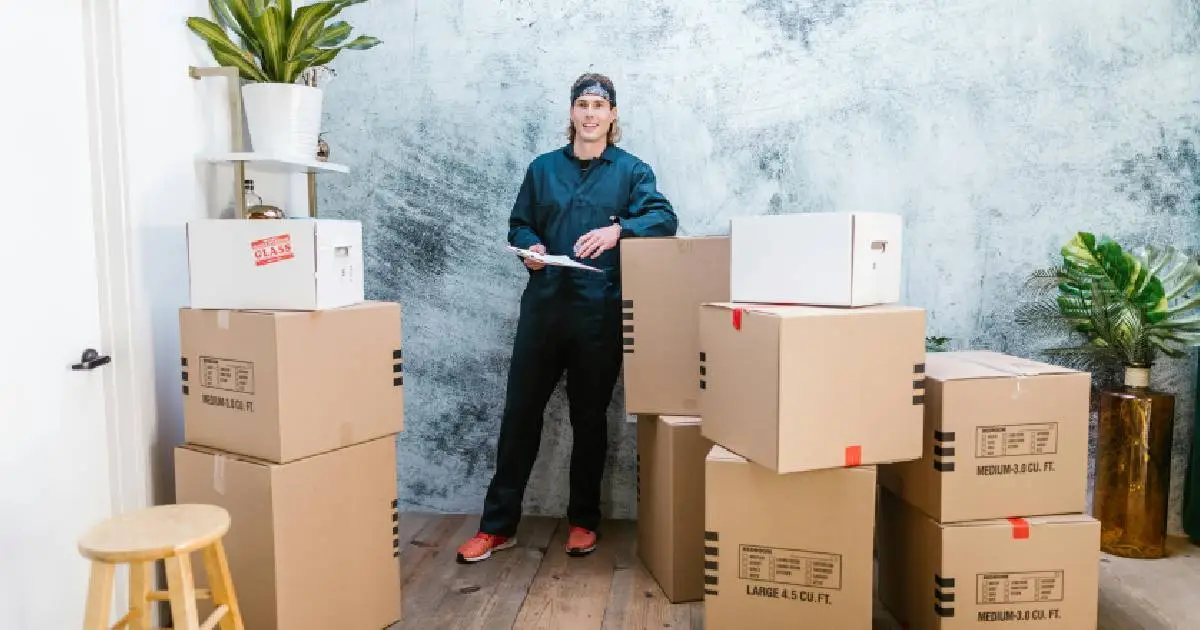How to pack for a move
Posted on 07 May 2025 | By Admin

Moving to a new home is an exciting chapter in life, but it can also be overwhelming. One of the most challenging aspects of relocating is figuring out how to pack and move all your belongings efficiently and safely. Whether you're moving across town or to a new city, packing for a house move requires careful planning, organization, and a lot of effort. This guide will walk you through everything you need to know about packing for a move, offering valuable tips and strategies that will help make your moving process smoother.
1. Start Early
Packing for a house move doesn't happen overnight. Ideally, you should begin the packing process at least 4-6 weeks before your moving day. Starting early gives you ample time to declutter your home, pack strategically, and handle unexpected issues that may arise.
Tip: Set aside time every day to pack a few boxes and focus on one room at a time. You don’t have to do everything at once—breaking the process down into manageable tasks will reduce the stress associated with packing.
2. Declutter Before You Pack
Before you start wrapping up your belongings, it’s a good idea to declutter your home. Moving is the perfect opportunity to assess your possessions and get rid of anything you no longer need. This will save you time, space, and potentially money on moving costs.
How to declutter:
- Sort through every room: Go through closets, drawers, and storage areas to identify items you no longer use or need.
- Donate or sell: Items in good condition can be donated to charity or sold online or through garage sales.
- Recycle or discard: For things that are broken or outdated, recycle them if possible or dispose of them responsibly.
Decluttering reduces the number of things you need to pack and move, making the whole process more efficient and less stressful.
3. Create a Packing Plan
One of the best packing tips for house moves is to create a detailed plan. A moving checklist is essential to keep track of what needs to be done and when. Here’s a simple packing plan to follow:
Packing Plan:
- Week 1-2: Begin with non-essential items, such as decorations, seasonal clothing, and books. These are things you won’t need immediately.
- Week 3-4: Pack kitchenware, spare furniture, and off-season clothing.
- Week 5: Start packing everyday items that you can temporarily do without, like extra sets of towels or linens.
Having a packing schedule will help you stay on track and avoid last-minute packing chaos.
4. Gather Packing Materials
The right packing materials are essential when you’re learning how to pack and move. You don’t want to risk your fragile items breaking or your clothes getting damaged during the process. Gather these materials before you begin packing:
- Boxes: Use sturdy cardboard boxes for packing. You can find them at moving supply stores or ask local stores for free boxes.
- Packing tape: A strong, high-quality tape is crucial to securely seal your boxes.
- Bubble wrap & packing paper: These materials are great for cushioning fragile items.
- Marking pens: Label your boxes with contents and destination rooms.
- Furniture pads & blankets: Protect larger furniture pieces from scratches and dents.
- Wardrobe boxes: These tall boxes are perfect for hanging clothes and keeping them wrinkle-free during the move.
Tip: Collect free boxes from local stores or ask friends who have recently moved. This will save you money on moving supplies.
5. Pack Room by Room
A key strategy for packing is to focus on one room at a time. This method keeps you organized and helps you avoid confusion about where things go. Here are some room-by-room tips for packing for a house move:
Living Room:
- Pack books, DVDs, and electronics. Wrap these in bubble wrap or packing paper. Use strong boxes for heavier items like books.
- Furniture: Disassemble large furniture items like tables and shelves if possible. Wrap them in moving blankets to prevent damage.
- Decor: Pack delicate décor items like artwork, vases, and picture frames in boxes with extra padding.
Kitchen:
- Plates, glasses, and cups: Wrap each item in bubble wrap or packing paper, and stack them vertically in boxes to minimize breakage.
- Pots, pans, and kitchen utensils: Group similar items together, and use smaller boxes to pack heavier items. For knives, place them in a protective sleeve or a box to avoid injury.
- Food: Plan ahead and try to use up or donate perishable items. Non-perishable items like canned goods can be packed in sturdy boxes.
Bedroom:
- Clothing: Use wardrobe boxes to keep your clothes organized. For folded clothing, pack them in suitcases or large boxes.
- Bedding and linens: Roll up blankets, sheets, and pillows and pack them in boxes.
- Furniture: Disassemble beds and other furniture if possible. Keep screws and small parts in labelled bags and tape them to the furniture.
Bathroom:
- Toiletries: Pack toiletries in plastic bags to prevent spills. Group them into smaller boxes, so they don’t shift around during the move.
- Towels and washcloths: Pack towels in boxes or suitcases to keep them neat and protected.
Home Office:
- Documents and files: Use file boxes to keep important papers organized and safe. If you have sensitive documents, consider using a file safe or locking box.
- Electronics: Pack computers, printers, and other devices in their original boxes if possible. If not, use bubble wrap to cushion them.
6. Label Your Boxes
As you pack each box, make sure to label it clearly with its contents and the room it belongs in. This will make unpacking much easier, as you won’t have to dig through multiple boxes to find what you need.
Labeling tips:
- Use large, bold writing to ensure the labels are easy to read.
- Color code boxes based on the room they belong to. For example, blue for the kitchen, red for the bedroom, and so on.
- Include a brief description of the contents (e.g., "kitchen—plates and glasses”).
- Add “fragile” or “this side up” labels for delicate or heavy items.
7. Protect Fragile Items
Packing fragile items requires extra care. If you're unsure how to pack and move breakables, here’s a step-by-step approach to ensure their safety:
- Wrap items individually: Use bubble wrap or packing paper to wrap each fragile item separately.
- Use dish packs for glassware: Dish packs are specialized boxes that offer extra protection for fragile kitchenware.
- Fill gaps: Once your fragile items are wrapped, fill any empty spaces in the box with packing peanuts, crumpled paper, or air-filled bags to prevent movement.
- Mark fragile boxes: Make sure fragile boxes are clearly labelled as such, so movers handle them with extra care.
8. Pack Essentials Separately
On a moving day, you’ll need certain items easily accessible, so pack an “essentials” box or bag. This box should include things you’ll need immediately upon arrival at your new home.
Essential items to pack:
- Personal documents (ID, passports, lease agreements)
- Toiletries and medications
- A change of clothes
- Chargers for electronics
- Snacks and drinks
- Basic cleaning supplies
- Important contact information
Keep this box with you rather than loading it onto the moving truck, so you have everything you need right away.
9. Protect Your Furniture
Furniture can be bulky and heavy, making it prone to damage during the move. Here’s how to protect your furniture:
- Disassemble large pieces: Take apart anything that can be safely disassembled, such as bed frames, tables, and bookshelves.
- Use moving blankets: Wrap your furniture in blankets to protect against scratches and dents.
- Secure with stretch wrap: Use stretch wrap to keep items together, such as drawers, cabinet doors, and upholstered pieces.
10. Labeling and Inventory
Proper labelling ensures you can locate items easily after the move.
- Detailed Labels: Include the contents, room, and any handling instructions like “Fragile” or “This Side Up.”
- Create an Inventory: Maintain a master list of all packed boxes and their contents.
How Long Does It Take to Pack an Entire House?
The answer is as long as a piece of shipping tape—highly variable!
It all depends on factors like your schedule, whether you're packing solo or with help from friends and family, and, most importantly, how much stuff you own.
As a general rule of thumb, two people can pack an entire house in about a week if they dedicate a few hours each day to the task. Another way to break it down is by rooms—plan for one day of packing per room. So, for a house with five rooms, you can expect the process to take around five days.
Pressed for time or feeling overwhelmed? Professional packers are just a call away!
When Should I Start Packing for a Move?
While you'll start planning your move about one to two months ahead, packing itself typically begins two to three weeks before your moving day.
That said, the timing varies depending on factors like how much you own and how much free time you can dedicate to packing.
For example, a single person living in a one-bedroom apartment with part-time work may only need a few days to pack. On the other hand, a busy individual with a full-time job, a three-bedroom house, and four kids will need to start packing much earlier.
Evaluate your weekly and weekend availability, assess the size of your household, and create a timeline that suits your situation to ensure a smooth packing process.
Essential Moving Checklist for Melbourne Residents
Relocating to a new home isn’t just about changing your address—it’s a fresh start filled with new opportunities and experiences. Whether you're moving into a bustling high-rise in Melbourne's CBD or a peaceful suburban retreat, the process can feel overwhelming. Packing up your belongings and navigating the busy streets might seem daunting, but don't worry.
With a bit of careful planning and assistance from the top removalists in Melbourne, your move can be seamless and even enjoyable. In this blog, we'll walk you through a straightforward and practical moving checklist to ensure your relocation is smooth and stress-free.
Let's get you prepared for a hassle-free transition into your new home!
1. Plan Ahead and Set a Moving Date
A smooth move begins with solid planning. Start preparing at least six weeks in advance to avoid last-minute stress. Important tasks like securing your moving date, booking a removalist, and setting up utilities should all be added to your calendar for a hassle-free transition.
2. Declutter and Downsize
Before you begin packing, declutter your home. Sort through each room and decide what you no longer need. Sell, recycle, or donate items to reduce the number of things you'll need to pack. Not only will this save space, but it will also lower your moving costs since removal companies often charge based on volume and weight. The less you have, the more affordable the move will be.
3. Hire Trusted Removalists in Melbourne
For a stress-free move, hiring a reliable removalist company is essential. Choose an experienced company that specializes in both local and long-distance moves. The right movers will provide the necessary equipment and professional staff to ensure that your belongings are packed, loaded, and transported safely. Be sure to get a quote upfront to avoid any surprise fees, and check that the company offers insurance for added peace of mind.
4. Organise Packing Supplies
Packing is one of the most time-consuming aspects of moving, but it’s much easier when you have the right supplies. Start by gathering sturdy moving boxes, packing tape, bubble wrap, and markers to label each box with its contents and destination room. Wrap fragile items carefully to prevent breakage during transit. If you're on a budget, household items like blankets and towels can work as cushioning alternatives.
5. Pack an Essentials Box
To make settling in easier, pack an “essentials box” with items you'll need immediately upon arrival, such as toiletries, a change of clothes, medications, important documents, chargers, and basic kitchen supplies. Having this box handy will save you time and frustration as you get comfortable in your new home.
6. Notify Utility Providers and Change Your Address
Don’t forget to update your address with utility companies, including electricity, gas, and internet providers. Also, inform your bank, insurance companies, and subscription services. To ensure you don’t miss any important mail, set up mail forwarding so your correspondence reaches your new address until you’ve officially moved.
7. Prepare Your New Home
If possible, visit your new home a few days before the move. Use this time to clean, organise, and plan where your furniture and belongings will go. If you're moving into an apartment, arrange for parking and elevator access for the moving truck. These preparations will help the moving day go smoothly and avoid any last-minute complications.
8. Create a Checklist
Stay organised by creating an inventory of all your belongings. List the contents of each box and take photos of valuable or fragile items. This checklist will help you track everything during the move and make it easier to check items off as they’re loaded and unloaded. It also serves as a useful reference in case you need to file an insurance claim for any damages.
9. Stay in Touch with Your Movers
Keep communication open with your moving team throughout the process. Confirm schedules, logistics, and any last-minute changes. Many moving companies offer tracking services, allowing you to monitor your belongings as they make their way to your new home. Staying in touch will help ensure everything goes according to plan.
10. Double-check and Clean Your Old Home
Before leaving your old home, take a final walk-through to ensure nothing is left behind. Clean the space, return any borrowed items, and make sure the property is left in good condition for the next residents. This will help you avoid any issues with your landlord or property manager.
11. Unpack Strategically
Once you arrive at your new home, begin by unpacking the most essential rooms first, such as the kitchen and bedroom. Unpacking in stages will help you avoid feeling overwhelmed. Take your time to arrange your new space and don’t rush. You’ll want your new home to feel comfortable and well-organized as you settle in.
12. Enjoy Your New Home
Finally, once everything is unpacked and organized, take a moment to relax and enjoy your new space. Moving can be a lot of work, but the reward of settling into a fresh home is worth it. Explore your new neighbourhood, meet the locals, and start creating new memories in your new environment.
Choosing a skilled mover for your local removalist needs is crucial to ensuring a smooth and efficient relocation. These professionals are well-equipped to handle the logistics of "how to pack and move" your belongings with care, providing expert packing, transport, and unpacking services. By trusting experienced movers, you can avoid common pitfalls, reduce stress, and ensure that your items arrive safely at your new home. Whether it's fragile items or bulky furniture, a skilled mover ensures the process is seamless, allowing you to focus on settling into your new space.


